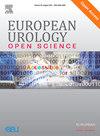Targeting All Multiple Magnetic Resonance Imaging Prostate Lesions Does Not Enhance Cancer Detection: Insights from the YAU Prostate Cancer Group
IF 3.2
3区 医学
Q1 UROLOGY & NEPHROLOGY
引用次数: 0
Abstract
Background and objective
Although diagnostic efficacy of multiparametric magnetic resonance imaging (MRI) in identifying index lesions (ILs) in prostate cancer (PCa) patients is well established, challenges arise when multiple lesions (MLs) are present. Determination of an optimal biopsy strategy for these patients is crucial. This study aims to assess the risk of detecting PCa and clinically significant PCa (csPCa; International Society of Urological Pathology [ISUP] grade group ≥2) when targeting suspicious MRI MLs in addition to the IL.
Methods
We included 1310 biopsy-naïve patients with only a single MRI lesion (SL) and 621 men with MLs. Patients underwent a subsequent targeted biopsy (TBx) of each lesion, along with a systematic biopsy (SBx). We compared TBx alone versus TBx + SBx and evaluated whether the presence of MLs increases the risk of PCa and csPCa using a multivariable logistic regression model (MVA), while accounting for confounders.
Key findings and limitations
Overall, PCa was detected in 57.6% and 51.2% of IL-TBx for the SL and ML groups, respectively (p ≤ 0.01). The rates of detection of csPCa with IL-TBx were 46.2% for the SL group and 36.1% for the ML group (p < 0.01). When combining all TBx and SBx procedures, PCa was detected in 63.8% for the SL group and 67.0% for the ML group (p = 0.2), while csPCa was detected in 54.1% for the SL group and 48.1% for the ML group (p = 0.01). SBx yielded PCa detection rates of 58.5% for the SL group and 56.7% for the ML group (p = 0.5) and csPCa detection rates of 42.1% for the SL group and 38.8% for the ML group (p = 0.2). ISUP upgrading targeting the 2° and 3° lesions was found in 14 (12.2%) and six (5.2%) cases, respectively. In the MVA, the presence of MLs was identified as an independent predictor of PCa (odds ratio [OR]: 0.6, 95% confidence interval [CI]: 0.5–0.8, p < 0.01) and csPCa (OR: 0.5, 95% CI: 0.4–0.6, p < 0.01) in TBx and combined TBx + SBx (PCa: OR: 0.6, 95% CI: 0.5–0.9, p = 0.02, and (csPCa: OR: 0.4, 95% CI: 0.3–0.7, p < 0.01), respectively.
Conclusions and clinical implications
Patients with MLs have a lower risk of PCa and csPCa. In case of MLs, a TBx of the IL + a concomitant SBx allows for the diagnosis of the vast majority of PCa and csPCa cases. The added value of a second TBx on the non-IL is modest, including only a 5.6% increase in the diagnosis of csPCa.
Patient summary
We studied whether targeting multiple suspicious areas on prostate magnetic resonance imaging increases cancer detection. We found that patients with multiple lesions had a lower risk of prostate cancer than those with a single lesion. Targeting the largest suspicious area along with sampling the entire prostate led to the detection of most cancer cases, with little added benefit from targeting the other smaller areas.
针对所有前列腺病变的多重磁共振成像并不能提高癌症的检测:来自YAU前列腺癌小组的见解
背景与目的尽管多参数磁共振成像(MRI)在识别前列腺癌(PCa)患者的指数病变(ILs)方面的诊断效果已经得到了很好的确立,但当存在多个病变(MLs)时,挑战就出现了。确定这些患者的最佳活检策略至关重要。本研究旨在评估发现前列腺癌和临床显著性前列腺癌(csPCa;国际泌尿病理学学会[ISUP]分级组≥2),除针对il外,还针对可疑的MRI MLs。方法我们纳入1310例biopsy-naïve只有单一MRI病变(SL)的患者和621例男性MLs。患者随后对每个病变进行靶向活检(TBx)和系统活检(SBx)。我们比较了单独使用TBx与TBx + SBx,并使用多变量logistic回归模型(MVA)评估MLs的存在是否会增加PCa和csPCa的风险,同时考虑了混杂因素。总体而言,SL组和ML组IL-TBx的PCa检出率分别为57.6%和51.2% (p≤0.01)。IL-TBx在SL组和ML组的csPCa检出率分别为46.2%和36.1% (p <;0.01)。当所有TBx和SBx手术合并时,SL组PCa的检出率为63.8%,ML组为67.0% (p = 0.2),而SL组csPCa的检出率为54.1%,ML组为48.1% (p = 0.01)。SBx对SL组和ML组的PCa检出率分别为58.5%和56.7% (p = 0.5),对SL组和ML组的csPCa检出率分别为42.1%和38.8% (p = 0.2)。针对2°和3°病变的ISUP升级分别有14例(12.2%)和6例(5.2%)。在MVA中,MLs的存在被确定为PCa的独立预测因子(优势比[OR]: 0.6, 95%可信区间[CI]: 0.5-0.8, p <;0.01)和csPCa (OR: 0.5, 95% CI: 0.4—-0.6,p & lt;0.01) TBx和合并TBx + SBx (PCa: OR: 0.6, 95% CI: 0.5-0.9, p = 0.02)和(csPCa: OR: 0.4, 95% CI: 0.3-0.7, p <;分别为0.01)。结论及临床意义MLs患者发生PCa和csPCa的风险较低。在MLs的情况下,IL的TBx +伴随的SBx允许绝大多数PCa和csPCa病例的诊断。第二次TBx对非il的附加价值不大,包括csPCa的诊断仅增加5.6%。我们研究在前列腺磁共振成像上针对多个可疑区域是否能增加癌症的检测。我们发现有多个病变的患者患前列腺癌的风险比只有一个病变的患者低。针对最大的可疑区域,并对整个前列腺进行采样,导致大多数癌症病例的发现,而针对其他较小的区域几乎没有额外的好处。
本文章由计算机程序翻译,如有差异,请以英文原文为准。
求助全文
约1分钟内获得全文
求助全文
来源期刊

European Urology Open Science
UROLOGY & NEPHROLOGY-
CiteScore
3.40
自引率
4.00%
发文量
1183
审稿时长
49 days
 求助内容:
求助内容: 应助结果提醒方式:
应助结果提醒方式:


